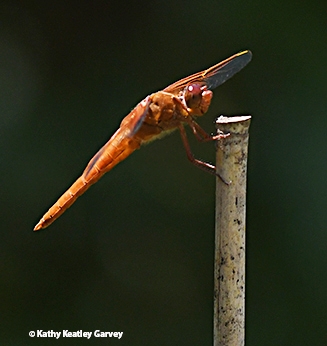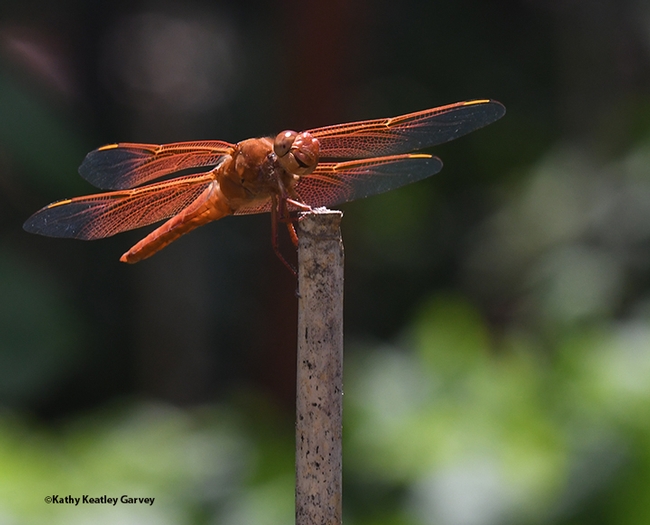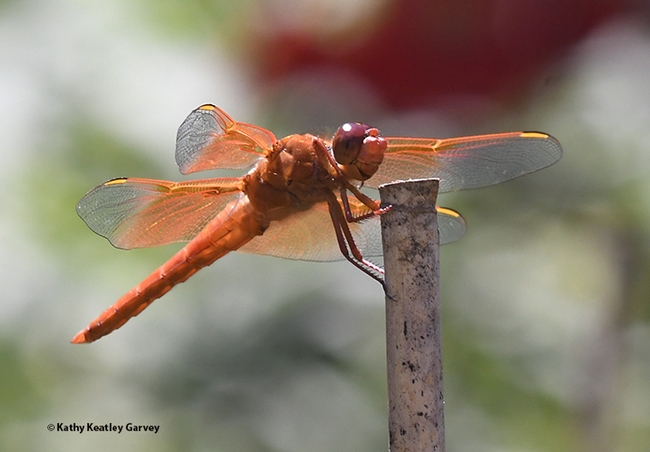
This male made its appearance in our Vacaville pollinator garden on May 17, and hung around long enough for me to capture several images.
Like a lens to a flame...
When folks talk about seeing "a red dragonfly," they might not know the species, but they do know it's firecracker red.
"It was red! Firecracker red!"
Ten fast facts about dragonflies, as provided by the Bohart Museum of Entomology at UC Davis:
- Dragonflies date back before the dinosaur age.
- The largest known prehistoric species of dragonfly, living 300 million years ago, was the Meganeura monyi. Its wingspan measured more than two feet long.
- The largest species today is a South American dragonfly with a wingspan of 7.5 inches. The smallest modern species is an east Asian dragonfly, the libellulid dragonfly, Nannophya pygmaea, with a wingspan of about 3/4 of an inch.
- California is home to approximately 108 species. More than 5000 species are found worldwide.
- Dragonflies help control pests such as mosquitoes, midges and flies, but will also dine on honey bees and butterflies.
- The adults feed by hawking their prey. They dart off a perch to catch prey and often return to the perch to eat.
- Most dragonflies live around lakes, ponds, streams, and marshes; their larvae, known as “nymphs,” are aquatic. Some dragonfly larvae live in bromeliad flowers.
- Dragonflies usually do not bite or sting humans, but if grasped by the abdomen, they may bite to escape.
- The dragonfly is thought to have better eyesight than any other insect. Its compound eyes take up much of the insect's head. Each compound eye has up to 30,000 facets or sensor modules, arranged to provide nearly a 360-degree field of vision. That's why it's difficult to sneak up on them.
- Dragonflies are a common motif in Native American art, displayed on Zuni pottery, Hopi rock art and on Pueblo necklaces. In Japan, they are considered symbols of courage, strength and happiness.
The Bohart Museum, directed by UC Davis distinguished professor Lynn Kimsey, is celebrating its 75th anniversary. It's the home of nearly eight million insect specimens; a live "petting zoo," comprised of Madagascar hissing cockroaches, stick insects (aka "walking sticks"), and tarantulas; and an online gift shop stocked with insect-themed t-shirts, jewelry, books, posters, collecting equipment and the like.
It's temporarily closed due to COVID-19 pandemic precautions. But just you wait...good things are going to happen!
Attached Images:

